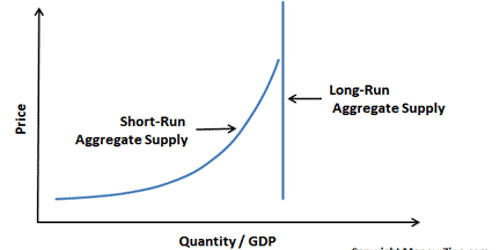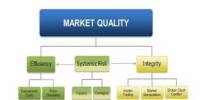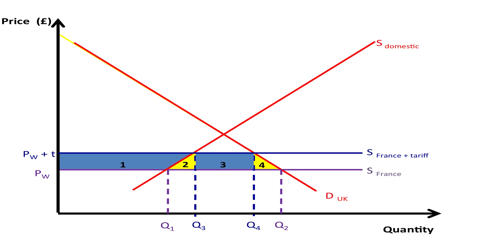Aggregate Supply is the total supply of goods and services produced within an economy at a given overall price in a given period. In economics, aggregate supply (AS) or domestic final supply (DFS) is the total supply of goods and services that firms in a national economy plan on selling during a specific time period. It is the total supply of goods and services available to a particular market from producers. It is the total amount of goods and services that firms are willing and able to sell at a given price level in an economy. That time frame is important because supply changes more slowly than demand. It determines the extent to which the aggregate demand increases the output and prices of a good or service. For example, demand can rise quickly, but companies can’t ramp up production as fast.
Aggregate Supply is the value of total output that all the firms are willing to supply during the given time period. It measures the volume of goods and services produced each year. It is also known as the National Product/National Income/GDP; because when firms supply the output, they generate income to the factors of production. And the value of output produced = income generated, so AS = Y or GDP. AS represents the ability of an economy to deliver goods and services to meet demand.

Aggregate supply is the total supply of goods and services that firms in a national economy plan to sell during a specific period of time. Short-term changes in aggregate supply are impacted most significantly by increases or decreases in demand. It moves from short-run to long-run by considering some equilibrium that is the same for both the short and long-run when analyzing supply and demand. Short-run aggregate supply shows the total planned output when prices can change but the prices and productivity of factor inputs e.g. wage rates and the state of technology are held constant. Long-term changes in aggregate supply are impacted most significantly by new technology or other changes in an industry. Long-run aggregate supply shows the total planned output when both prices and average wage rates can change – it is a measure of a country’s potential output. When capital increases, the aggregate supply curve will shift to the right, prices will drop, and the quantity of the good or service will increase. The aggregate supply curve depicts the quantity of real GDP that is supplied by the economy at different price levels.
















